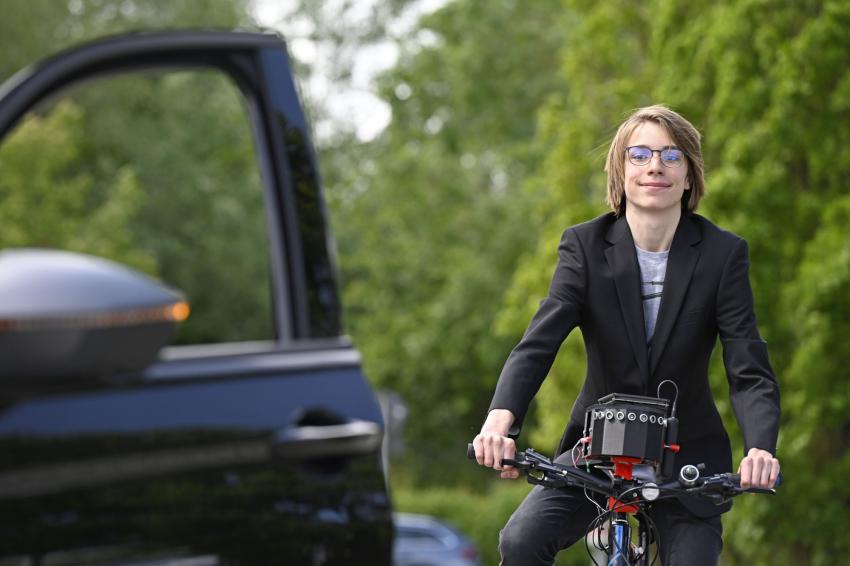Jugend forscht: Winner honored in Lübeck
STEM talents use automation technology for research projects
The national final 2022, for which 168 young MINT talents qualified with 108 innovative research projects, was jointly organized by the Jugend forscht e. V. and the Research Forum Schleswig-Holstein. Hendrik Ridder from Bremen built a 2.5 meter long water rocket that can fly up to a height of 270 meters. His missile starts from a self-constructed launch pad, is controlled fully automatically and serves as a flying weather station. The 16-year-old received the Federal President's Prize for extraordinary work. Intact moors store large amounts of the greenhouse gas carbon dioxide. Cornelius-Ägidian Quint (18) from Schleswig-Holstein developed an innovative method with which mosses can be resettled more quickly on former moor areas in order to renaturate them. He was awarded the Federal Chancellor's Prize for the most original work.
Maximilian Pfannkuch (19), Jaro Filip (19) and Dominik Hein (19) from Hesse received the prize from the Federal Minister of Education for the best interdisciplinary work. The three designed a new type of cleaning system controlled by an app that effectively disinfects room air with the light of LEDs. Vincent Nack (15) from Bavaria was the national winner in the field of working life. He designed an autonomous emergency braking assistance system for bicycles that can prevent collisions. To do this, he used ultrasonic and position sensors as well as an electromechanical control of the rear wheel brake.
Dihydroxybenzenes occur in the environment as degradation products of certain organic substances. Using the example of thale cress, David Sauer (18) from Rhineland-Palatinate examined the influence of these toxic substances on plants. He won the federal victory in biology. The national chemistry winners Hannah Amrhein (17), Lena Fries (16) and Hanna Fries from Bavaria found a new approach to recycling the plant nutrient phosphorus from wastewater. They used what is known as electroflotation, in which tiny flakes bind phosphates.
Can star clusters produce gamma rays? Vanessa Guthier (18) from Saxony-Anhalt wrote a computer program that enabled her to identify the specific conditions that must be met for gamma radiation to occur. She won in the field of geo and space sciences. Elian Terelle (18) from Rhineland-Palatinate convinced the jury in mathematics/computer science. The young researcher developed his own low-cost system for live video transmissions in the sports sector. With this, exciting game scenes can be rewound and repeated at any desired speed.
The national physics winner Carlos Steiner Navarro (18) from North Rhine-Westphalia dealt with the effect of magnetic levitation. In experiments, he managed to make a small magnet levitate constantly, to calculate the levitation position and to explain the phenomenon theoretically. Johann Elias Stoetzer (17) and Steven Gurgel (17) from Mecklenburg-Western Pomerania prevailed in the technical field. The two developed a process to print home-made 3D sensors onto textiles. Her approach will enable a number of new applications in the future, such as for the finishing of protective clothing.
The "Jugend forscht Schule 2022" award from the Standing Conference of the Ministers of Education in the Federal Republic of Germany, presented by the KMK President and Education Minister of the State of Schleswig-Holstein Karin Prien, went to the Wieland-Gymnasium Biberach for its excellent MINT funding.
Contact
Stiftung Jugend forscht e.V.
Baumwall 5
20459 Hamburg
Hamburg, Germany
+49 40 374709 40
+49 40 374709 99







